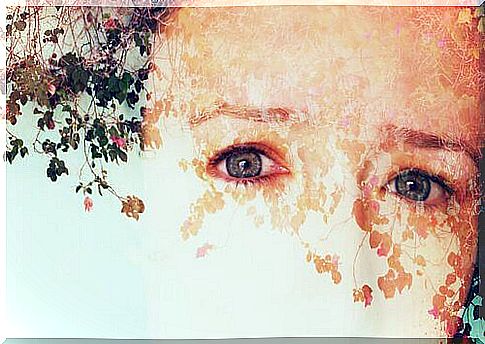What Exactly Is Daydream Syndrome?

The daydream syndrome is a very special syndrome. A person who suffers from it spends much of his time in his fantasies and is completely disconnected from reality. Although we all daydream, there are people who overdo it. Because of this, they become isolated, and they begin to neglect things like food, responsibilities, and relationships.
When we talk about a syndrome, you may be concerned, because you think that we begin to see pathologies in apparently normal things. So let’s first make it clear that all behavior that disrupts a person’s daily life is analyzed from a clinical point of view.
If someone uses their fantasy or daydreams to isolate themselves for hours from reality or to flee from an emotional conflict or trauma, neglecting themselves, we speak of pathological behavior.
So daydreaming in itself is not a problem. As long as we can still perform our duties and function, in any case. About 95% of the population falls into this category. In addition, we all daydream, and as a result we activate countless areas of the brain.
Structures such as the prefrontal cortex, the limbic system, and various cortical areas related to sensory information help us reflect on certain areas of our lives, nurture new projects, and improve our mood.
Daydreams are small moments in the day when our brains hit the reset button. This way we can rest for a while, and that is good for our well-being. However, it is a problem if we visit this fantasy world more often than our real life.
Behind the daydream syndrome often lie other problems. This can include various traumas, obsessive-compulsive personality disorder, underlying conflicts, and much more.
Let’s look at some more data.

The Characteristics of Daydream Syndrome
Daydream syndrome is not (yet) in the Diagnostic and Statistical Manual of Mental Disorders (DSM-V). We do expect it to be mentioned in the future, as more research is done on it. It got a name as early as 2002, when psychiatrist Eliezer Somer of the University of Haifa in Israel spoke of it. He gave it its name and described the symptoms associated with it.
The symptoms include:
- These patients are daydreamers. They create their own characters and immerse themselves in complex, detailed and vivid stories.
- The fantasies hinder their real life. Every daily stimulus can lead to a new story, a new plot that they can lose themselves in without paying attention to what they are doing at the moment.
- They neglect their responsibilities, including food and hygiene.
- They suffer from sleeping problems.
- When awake, you often see repetitive and stereotypical movements, including facial expressions.
- They mumble in a soft voice during the fantasies, directing their own dreams.
- These fantasies can last for hours. They become anxious when they have to stop and return to reality, similar to an addiction.

What’s Behind Daydream Syndrome?
As we have already indicated, this disorder is still in the research phase. However, there are many psychiatrists and psychologists who treat patients with daydream syndrome on a daily basis. We can also see more and more articles being published so we can get more data and treatment options. As a result, this condition is increasingly demarcated and practical experience confirms the information we have.
The daydream syndrome is often accompanied by other problems, such as other disorders. These are the following:
- People who have been abused or have experienced other traumatic events.
- Patients with depression may also suffer from daydream syndrome.
- People with obsessive-compulsive personality disorder.
- Borderline personality disorder or associative disorders.
- People with autism also tend to develop this syndrome.
Daydream Syndrome Treatments
The expert who works with patients who suffer from the daydream syndrome first wants to find out what the underlying cause of the disorder is. The therapeutic strategy is therefore not the same for someone with depression as it is for someone with compulsive-obsessive disorder. That is the challenge and the starting point from where we have to approach this disorder.
It is also interesting to note that psychiatrist Eliezer Somer has developed a scale that allows us to diagnose this condition. This scale consists of fourteen measuring points with which we define the disorder. It has managed to distinguish this disorder from other disorders such as schizophrenia or psychosis.
On the other hand , there is a psychotherapeutic technique called EMDR (Eye Movement Desensitization and Reprocessing) that offers a very efficient treatment. It is an interesting approach that allows us to solve emotional problems caused by traumatic events. Francine Shapiro developed this technique in 1987.

In the same way, cognitive behavioral therapy is also an effective treatment. The goals of this therapy are as follows:
- Getting the person back into reality.
- Promoting regulated activities and time management.
- Identifying stimuli that generate daydreams.
- Improving attention.
- Teach healthy living habits.
- Fostering interests that involve the patient in daily dynamics.
Conclusion
Finally, it is important to know when certain behaviors get in the way of our daily responsibilities and the possibility of a full, happy and responsible life. Daydream syndrome can be a drug that we use to isolate ourselves from a reality that hurts or serves us no purpose.








